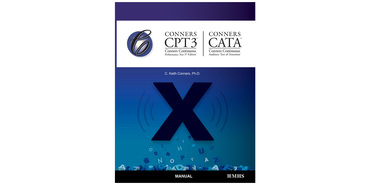Conners' Continuous Performance Test 3rd Edition (Conners CPT 3) is a task-oriented computerised assessment of attention-related problems in individuals aged 8 years and olderMHS is discontinuing the sale of Conners CPT 3 Software (USB) products on December 15, 2024. 
Conners' Continuous Performance Test 3rd Edition
Conners CPT 3
Conners' Continuous Performance Test 3rd Edition (Conners CPT 3) is a task-oriented computerised assessment of attention-related problems in individuals aged 8 years and olderMHS is discontinuing the sale of Conners CPT 3 Software (USB) products on December 15, 2024.‹ View all tests and materials
Conners CPT 3 Unlimited Use Kit CPT303
9780749168155
Qualification Level
B
Includes CPT Manual, CPT 3 Software, Unlimited CPT 3 uses
£1,666.40